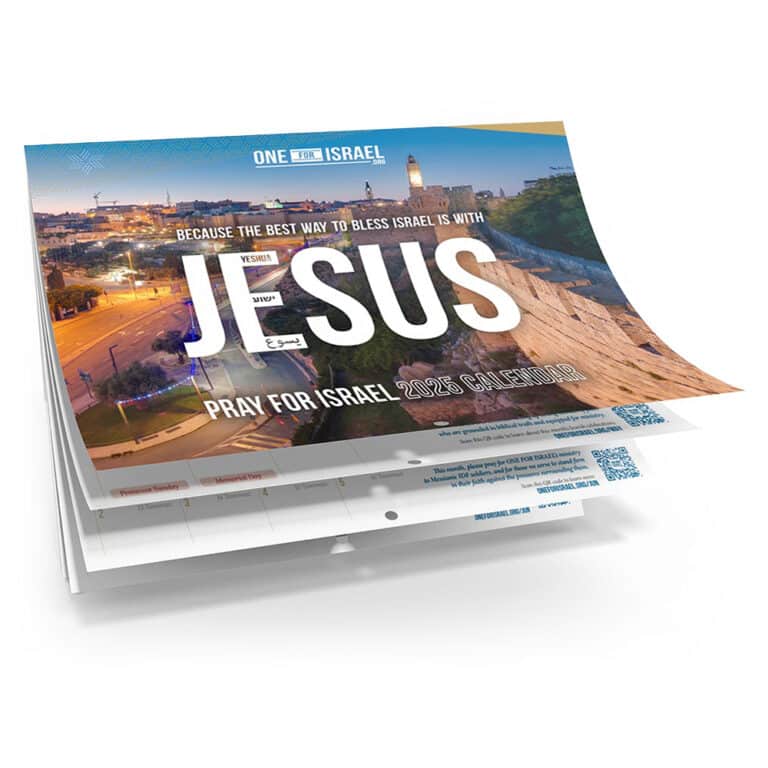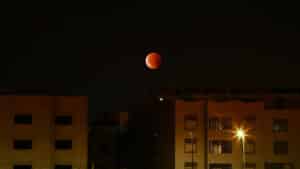The Passover meal marks the beginning of the week-long “Feast of Unleavened Bread”. Israel was commanded to eat unleavened bread (matzo bread with no yeast, no hametz in it) for a whole week. So Jewish people in Israel have to crunch their way through multiple square sheets of matzo bread, looking wistfully at the closed bakery sections for quite some time. But what does it mean? The most obvious answer is a reminder of the swift exodus from Egypt, when there was no time for the bread to rise. But there is one small problem with that explanation…
Timely instructions
God first spoke to Moses about his plans for the Passover in Exodus 12:1-5, saying,
“Tell all the congregation of Israel that on the tenth day of this month, each man is to take a lamb for his family, one lamb for the household… You must watch over it until the fourteenth day of the same month. Then the whole assembly of the congregation of Israel is to slaughter it at twilight.”
Incidentally, this twilight ritual slaughter of sacrificial Passover lambs is still practiced by the Samaritan people on the Mount Gerazim to this day. But back to the point – God presumably gives this instruction at the beginning of the month, since he says “this month”, and it must at least be before the 10th of that month, since that is the date God tells Moses that everyone has to choose their lamb. They then have to kill it on the 14th. So even if God tells Moses all this on the 9th, that’s still 5 days till Passover… why did they not have enough time to let bread rise? Verse 39 states,
“They had baked matzot cakes from the dough that they brought out of Egypt. It had no hametz, because they were thrust out of Egypt and could not delay, so they had not made provisions for themselves.”
But if they knew it would be a bit of a rush, surely they could have started the bread making process earlier? Quite possibly, but it speaks symbolically of haste. The eating of unleavened bread is a tangible reminder of the haste with which our forefathers left Egypt. It is a powerful symbol that helps to bring the ancient story alive again today in our own homes, in a very concrete and crunchy way.
However, haste is not the only issue with this unleavened bread business. In fact, the imperative to get rid of all the hametz is made quite clear throughout the rest of the chapter:
“During the first month in the evening of the fourteenth day of the month, you are to eat matzot [unleavened bread], until the evening of the twenty-first day of the month. For seven days no hametz [leaven] is to be found in your houses, for whoever eats hametz, that soul will be cut off from the congregation of Israel, whether he is an outsider or one who is born in the land. You are to eat no hametz; in all your houses you are to eat matzot.” (18-20)
What’s the deal with leaven?
It’s a little bit confusing as to what it is that God is getting at, and why removal of leaven is so important. As is the case in many situations, the New Testament sheds light on the matter for us.
1 Corinthians 5:6-8 draws the parallel between hametz (leaven) and sin – particularly the sin of pride.
“Your boasting is no good. Don’t you know that a little hametz leavens the whole batch of dough? Get rid of the old hametz, so you may be a new batch, just as you are unleavened—for Messiah, our Passover Lamb, has been sacrificed. Therefore let us celebrate the feast not with old hametz, the hametz of malice and wickedness, but with unleavened bread—the matzah of sincerity and truth.”
The idea of being “puffed up” with pride is also mentioned elsewhere by Paul in 1 Corinthians 4:18, 8:1, and Romans 11:11-32. The symbolism is clear – risen bread puffed up with leaven is reminiscent of sinful pride, and unleavened matzo bread is humble, simple, and pure.
Because there is enough leaven just in the air to have an effect on dough, special efforts have to be taken to prevent it from rising. The bread has lines scored across it, and holes pierced through it to help keep it laying low. This reminds us of how Yeshua, humble, pure and sinless, was striped and pierced as he gave his own life for the ultimate Passover sacrifice.
Another interesting aspect concerning matzo bread in the Passover meal is the “Afikomen” tradition that developed roughly around the time of Yeshua, in Roman times. Afikomen is a Greek word meaning “sweet” or “that which comes after”, and was inspired by Roman customs, as much of today’s Passover seder has been. The tradition is to keep three matzot in a cover, break the middle matzo in two, and hide a piece of it. The children are encouraged to search for the hidden piece, which is redeemed for a sweet treat when found. This can speak to us of the Father, Son and Holy Spirit – with the “Son” being taken out, broken, hidden away for awhile, and bringing redemption – the sweetest reward we will ever know.
Unlike the flat matzo bread, no amount of stripes and piercings could hold Yeshua down. There was no pride in him at all, but he rose again, and is lifted to the right hand of the Father now in glory, exalted higher than any other name, because of the incredible sacrifice he made to free you and me from slavery, sin and death.
Bread of remembrance
In the Passover meal, part of the ceremony is to eat the matzo bread together and remind each other by saying, “This is the bread of affliction that our fathers ate in Egypt”. It symbolises affliction, slavery, and lack of luxury. It is designed, along with the whole Passover meal, to help the children of Israel re-enact the Passover event year after year, each generation telling the story to the next. It was an issue of remembering what God had done for them in rescuing them from slavery and death.
In time, Yeshua would hold this same Passover matzo up and say to his followers, not “This is the bread of affliction our fathers ate in Egypt”, but “This is my body, broken for you. Do this in remembrance of me”.
It is no coincidence that Yeshua’s death was at the time of the Passover sacrifice, for the whole redemption story was a grand echo of an even greater redemption to come, planned by the same composer who orchestrated the miraculous Exodus.
















